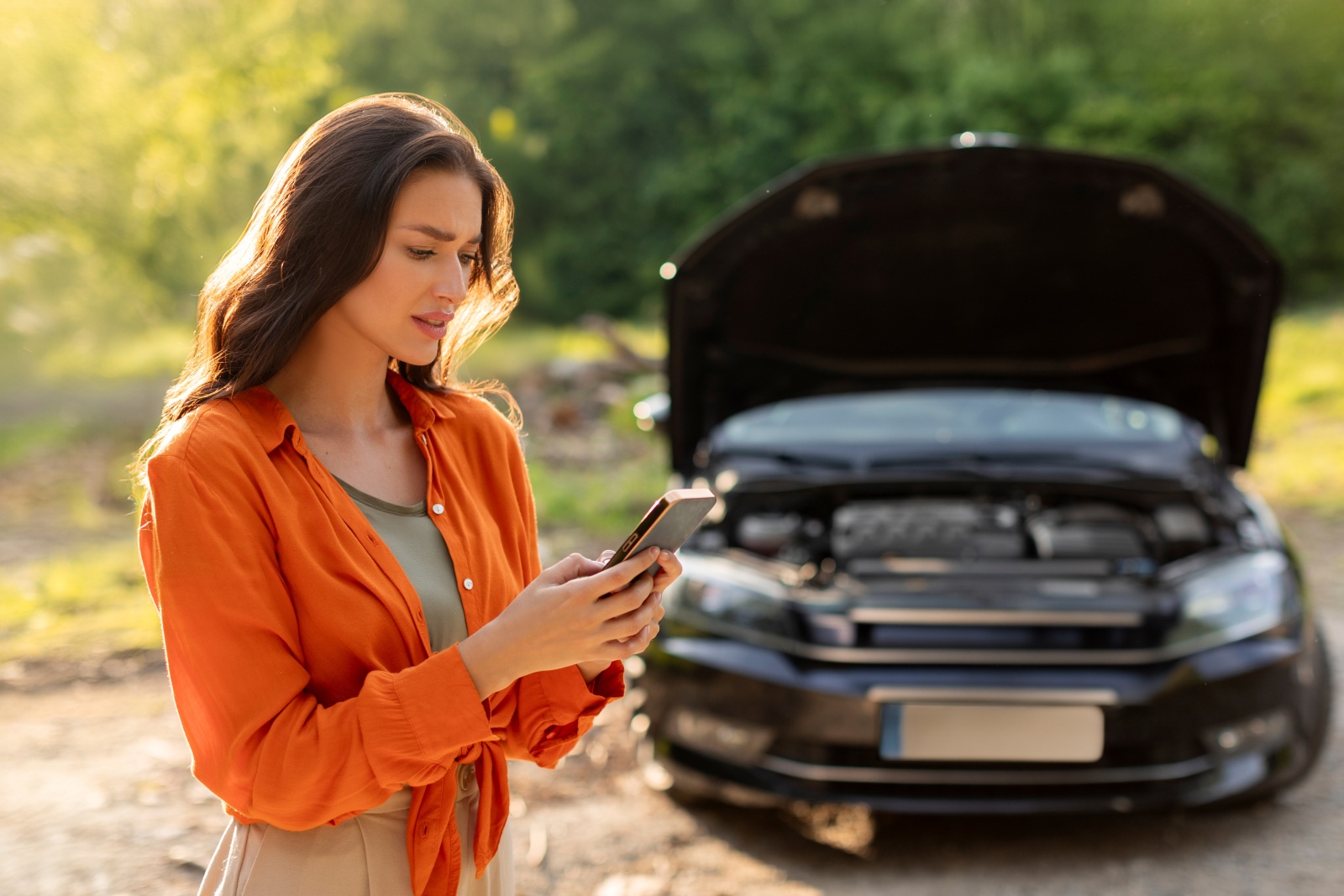
06 Jan What to Do When Your Car Breaks Down: A Step-by-Step Guide
Experiencing a car breakdown can be stressful, but following these steps can help ensure your safety and expedite assistance:
- Stay Calm and Assess the Situation: At the first sign of trouble, remain calm to make clear decisions. If your car is still moving, activate your hazard lights to alert other drivers and carefully steer your vehicle to a safe location, such as the shoulder of the road or a nearby parking area.
- Ensure Personal Safety: Once stopped, turn off the engine, engage the emergency brake, and remain inside the vehicle with your seatbelt fastened, especially if you’re near traffic. Exiting the vehicle near moving traffic can be dangerous. If you must leave the car due to immediate danger (e.g., smoke or fire), do so cautiously and move to a safe distance away from the roadway.
- Make Your Vehicle Visible: Keep your hazard lights on to increase visibility. If you have reflective triangles or flares, place them behind your vehicle to warn oncoming traffic. Raising the hood can also signal that your vehicle is disabled.
- Call for Assistance: Use your mobile phone to contact roadside assistance or a towing service, providing them with your location and a description of the issue. If you don’t have access to a roadside assistance plan, consider calling local authorities for help.
- Stay with Your Vehicle: Unless it’s unsafe, remain with your vehicle until professional help arrives. This ensures you’re present when assistance comes and helps prevent potential accidents from walking along a busy roadway.
- Prepare for Future Emergencies: Consider keeping an emergency kit in your vehicle, including items like a flashlight, batteries, first aid supplies, water, non-perishable snacks, and a portable phone charger. Regular vehicle maintenance can also help prevent breakdowns.
By following these steps, you can manage a vehicle breakdown safely and efficiently, minimizing stress and potential hazards until help arrives.



Sorry, the comment form is closed at this time.